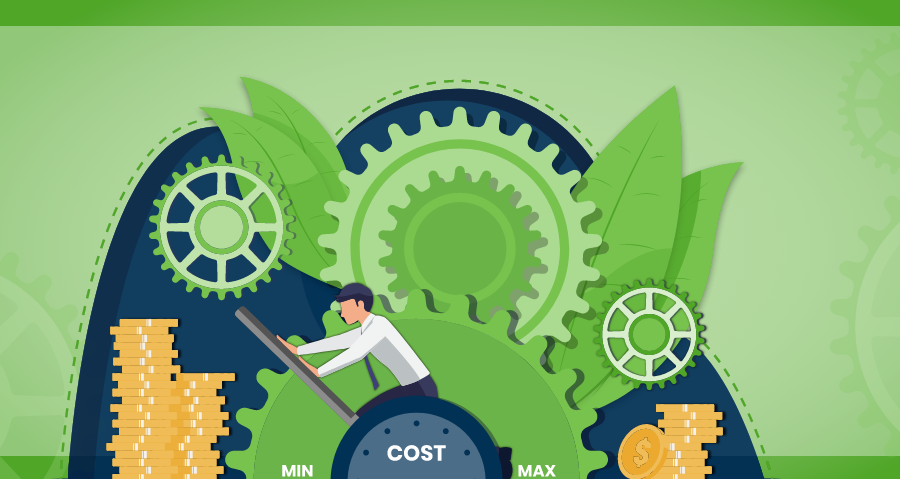What is Margin Leakage?
Margin leakage, similar to revenue leakage, is a decline in the profit margin occurring as a result of various factors particularly related to offering different types of incentives and promotions.
These leaks can be detrimental to the company’s revenue, significantly minimizing pocket price, and thereby profits, which makes eliminating them a top priority for all businesses.
Although the sources of leakage vary from company to company based on the specific pricing policies and operations, the key ones are list price, on-invoice price, off-invoice price, and pocket price leakages. They can range from slight drips to significant torrents. Whatever the intensity and threat level, margin leaks can be potentially devastating.
Modern technology can help you identify the causes of margin leakage and take the most effective corrective actions.
Implementing a cutting-edge profit analyzer will let you understand the reasons for margin depletion and enable you to create strategies to eliminate price leaks, enhance pricing effectiveness, and increase profits.
How Does Margin Leakage Work?
Unlike other forms of margin pressure, leakage is not caused by factors like market forces or direct and indirect costs incurred in creating a product.
In fact, margin leakage can come in many forms, such as off-invoice incentives, discounts, promotions, price concessions, and costs to serve.
With increasing competition, some businesses looking to acquire new customers will increase discounts with percentages reaching extremes of up to 95% off the list price. Such a pricing strategy can cut down the company’s profits considerably, diminishing the pocket margin.
The major types of incentives potentially leading to margin and price leakage are long-established. Here are the incentives you have to be careful with:
On-Invoice Deductions:
- Standard discounts – a deduction from the list price generally offered to distributors
- Special discounts – a deduction from the list price offered to selected distributors
- Volume discounts – reduced prices for customers purchasing large quantities of a product (large-volume customers)
- Promotional discounts offered within a specified period
Off-invoice leakages
- Cash discounts are provided for early payments
- Carrying costs of accounts receivable, such as the consignment cost of providing consigned inventory to a wholesaler or retailer
- Cooperative advertising allowances for promoting the brand locally by a wholesaler or a retailer
- Annual volume bonuses or rebates are provided to the best performing distributors based on the total annual volume of sales/purchases
- Off-invoice promotional discounts run over a specific period
- Freight costs paid to transport the products to the customer
- Discounts for online shopping, such as online ordering coupons and discount codes offered exclusively when placing an order online
- Performance penalties, which are the discounts provided by the company in case of failure to fulfill preset commitments like product quality and quantity and on-time delivery
While considered an effective strategy for attracting customers in a competitive business environment, incentives and promotions can deplete a company’s profit margin and lead to revenue leakage.
However, identifying the precise pattern and causes of margin leakage involves a complicated and cumbersome manual analysis and reviewing of all potential on-invoice and off-invoice price leakage.
Implementing an AI-enabled Margin Bridge Analyzer enables businesses to quickly and effortlessly analyze, simulate, and interpret all revenue and margin changes over time.
Such a solution eliminates the need for going through thousands of Excel spreadsheets to track the origins of your profit leakage and offers impactful and easy-to-consume insights.
Discover how one fuel producer realized a €2.3 Million Margin Lift with Vendavo.
How Can You Avoid Margin Leakage?
Preventing the occurrence of margin leakage requires considering the various components that determine the price quoted. Here are the steps you can take to avoid a decline in your profit margin.
Use a Price and Profitability Waterfall
A price and profitability waterfall offers a convenient framework for analyzing margin leakage.
As suggested by the term, this framework requires a company to map out and keep track of a waterfall of profitability drivers and price leakages to reveal the actual net price or pocket price.
A simple example of a price waterfall model will take into account:
- The list price
- The on-invoice price (including any surcharges and on-invoice discounts)
- The net price (including any applicable off-invoice incentives)
- The pocket price (accounting for costs to serve like shipment and returns)
- The pocket margin, or the profit you actually make.
Keeping track of all these figures using the price waterfall framework provides a clear idea and visualization of the points of margin and revenue gains and losses.
Use a Lead-to-Order Process
Adopting and following a lead-to-order process provides a clear end-to-end organization of the whole purchase cycle, from generating sales leads to converting them to opportunities and providing a quote to generating an order. This ensures visibility and manageability at each step of the process.
The combination of the price waterfall and the lead-to-order management, integrated with CRM and enterprise resource planning platforms, gives you better control over your pricing and revenue.
Provide Informed Pricing
Offering accurate, data-based, and competitive quotes promptly is vital in today’s dynamic and overcrowded market. It is difficult to provide informed pricing through the manual processing of spreadsheets and workflows.
Sales intelligence software streamlines the analysis of existing data and enables businesses to develop more efficient pricing and sales strategies ensuring good profit margins.
Sales intelligence equips management and sales specialists with pricing analytics and allows for optimization and improvement of the pricing process.
Measure Volume and Revenue Commitment
Volume and revenue commitment determine the minimum amount of goods or services a customer is obliged to order and pay for.
It is used in determining the quote offered to the particular customer, which makes the fulfillment of the commitment important for maintaining the profit margin.
Measuring the actual volume of orders and the revenue generated and comparing them with the contract will provide valuable insights into the customer’s behavior. Use this data for future negotiations and minimum volume commitment contracts.
Use Rebates for Volume Incentives
A rebate is a volume incentive that involves paying a return or refund retrospectively. This enables businesses to avoid the risk of overpayments or underpayments by tracking and making decisions based on actual performance.
Rebates offer great potential for incentivizing customers conveniently provided appropriate rebate management is used. Done manually, they involve demanding data processing and risk assumption.
Power Profit Growth By Avoiding Margin Leakage
Digital transformation is essential for understanding the factors causing a decline in profit margin and building a strategy to overcome their effect.
With the right technology in place, companies will be able to foster business agility, optimize their pricing, and realize their full potential while responding to dynamic market changes.
The implementation of the steps above helps avoid margin leakage, which drives profitability and growth.



